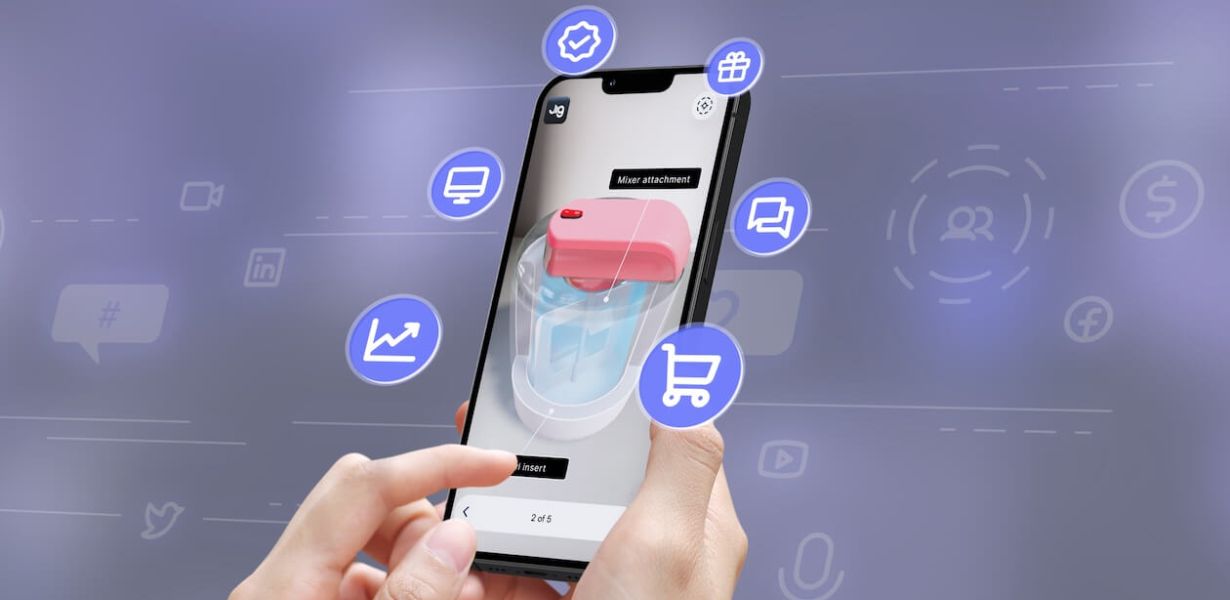
Optimizing Mobile-First Design for Augmented Reality: The Future of Mobile Interaction
- Post
- August 7, 2023
- Mobile & Responsive, Mobile-First Design, Web Design
- 0 Comments
In the rapidly evolving landscape of mobile technology, Augmented Reality (AR) has emerged as a groundbreaking innovation that promises to revolutionize the way we interact with mobile devices. As we delve into the potential of AR and its seamless integration with mobile-first design, the possibilities for enhancing user experiences and driving engagement become increasingly evident. In this blog, we will explore the key strategies and considerations for optimizing mobile-first design for augmented reality, paving the way for the future of mobile interaction.
Understanding Mobile-First Design and its Significance
Mobile-first design is an approach that prioritizes designing websites and applications for mobile devices first, before adapting them for larger screens. With the increasing dominance of mobile usage over traditional desktops, this strategy becomes paramount for providing a seamless user experience. It involves creating a responsive and intuitive design that caters to the constraints and advantages of mobile devices, such as smaller screens and touch-based interactions. Incorporating AR into this design philosophy opens new avenues for interactive and immersive experiences, enhancing user engagement and satisfaction.
Mobile-First Design Examples:
IKEA Place: Allows users to virtually place furniture in their homes using AR.
Snapchat Filters: Augmented reality filters overlaying on users’ faces in real-time.
The Intersection of Mobile-First Design and Augmented Reality
Augmented Reality, the technology that superimposes digital elements onto the real world, has evolved significantly in recent years. Integrating AR with mobile-first design leverages the capabilities of smartphones, such as GPS, camera, and sensors, to deliver context-aware and interactive experiences. By blending digital elements seamlessly into the physical environment, AR enhances real-world interactions, providing users with valuable information and entertainment in a novel and engaging manner.
Enhancing User Engagement with Immersive Experiences
One of the primary benefits of combining AR with mobile-first design is the ability to create immersive experiences. AR applications enable users to interact with products, information, or services in a 3D virtual environment. This interactivity not only captures user attention but also drives higher engagement levels. For instance, retailers can offer virtual try-ons for clothing and accessories, allowing users to visualize products on themselves before making a purchase.
Mobile-First Design Templates:
AR-Based Navigation: Providing AR-based directions and information about nearby points of interest.
Virtual Showrooms: Creating interactive AR showrooms to showcase products in a virtual space.
Overcoming Challenges in Mobile-First AR Design
While the integration of AR with mobile-first design opens up exciting possibilities, it also comes with unique challenges. Designers must ensure that AR elements do not overwhelm the user interface, and they should align with the overall aesthetic and purpose of the application. Moreover, optimizing AR for different devices and operating systems requires careful consideration to ensure a consistent experience across various platforms.
The Future of Mobile Interaction: Beyond the Screen
AR-driven mobile interaction is just the beginning of a broader shift in how we interact with technology. As AR hardware advances, we can anticipate a shift from screen-dependent interactions to more intuitive and immersive experiences. Wearable AR devices, such as AR glasses, have the potential to transform how we access and process information, making interactions more seamless and natural.
Key Considerations for Mobile-First AR Design
Creating effective mobile-first AR experiences demands a thoughtful approach. Here are some key considerations to keep in mind:
Context is Key: Understand the user’s context and deliver AR content that adds value to their surroundings.
Simplicity and Clarity: Ensure that AR interactions are simple, intuitive, and easy to understand for users of all ages and technical backgrounds.
Performance Optimization: AR experiences require significant processing power. Optimize the application to ensure smooth performance on a wide range of devices.
User Testing: Conduct extensive user testing to gather feedback and refine the AR experience based on real-world usage.
Augmented Reality and E-commerce
E-commerce stands to benefit immensely from the integration of AR in mobile-first design. AR empowers consumers to make more informed purchasing decisions by visualizing products in their physical space. This technology reduces the likelihood of returns and enhances customer satisfaction, ultimately driving conversions for online retailers.
The Rise of AR-Enhanced Social Media
Social media platforms have embraced AR to provide users with interactive and entertaining experiences. AR filters, effects, and lenses have become an integral part of platforms like Instagram, Snapchat, and Facebook. Users can transform their selfies with AR filters or engage with branded AR experiences, generating valuable user-generated content and boosting brand visibility.
Mobile-First Design Approach:
Responsive Web Design: Prioritize responsive web design to ensure a consistent experience across devices.
Content Adaptation: Adapt content for smaller screens and focus on delivering essential information upfront.
AR Gaming and Mobile-First Design
The gaming industry has witnessed a significant impact with the introduction of AR technology. Games like Pokémon GO have captured the world’s imagination, blurring the lines between the virtual and real worlds. Integrating mobile-first design principles into AR games ensures smooth gameplay and a seamless user interface, driving higher user retention and engagement.
Final Words
In conclusion, the fusion of mobile-first design with augmented reality holds immense potential to shape the future of mobile interaction. As technology continues to advance, we can expect more seamless and immersive experiences that bridge the gap between the digital and physical worlds. Embracing AR in mobile-first design empowers businesses to stay at the forefront of innovation, delight users, and drive meaningful engagement.
Commonly Asked Questions
Q1. How can I incorporate AR into my mobile app or website?
Integrating AR into your mobile app or website requires expertise in AR development. You can either hire AR developers or utilize AR development frameworks to add AR features to your existing app or website.
Q2. What are some compelling use cases for mobile-first AR design?
Mobile-first AR design is versatile and applicable to various industries. Some compelling use cases include virtual try-ons in the fashion industry, interactive product demonstrations in retail, and AR-guided navigation for tourists.
Q3. Are there any downsides to implementing AR in mobile-first design?
While AR offers exciting opportunities, it also comes with challenges like higher development costs and ensuring compatibility across devices. Careful planning and testing are necessary to overcome these hurdles.
Q4. How can AR benefit e-commerce businesses?
AR enhances the e-commerce experience by allowing customers to virtually try products before purchasing. This feature reduces returns, boosts customer satisfaction, and increases conversions.
Q5. What types of AR hardware can we expect in the future?
The future of AR hardware is likely to include more compact and powerful AR glasses or smart contact lenses, offering users a more seamless and hands-free AR experience.




